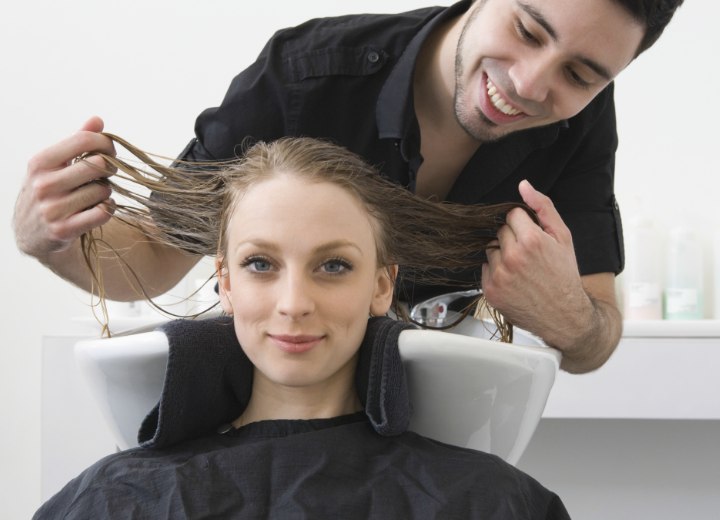How to Get Back to Your Natural Hair Color (2)

If you do end up with an unfortunate result, we have some guidelines for hair color correction available.
Speaking of finding the right approach, for some individuals, sitting in a salon chair and undergoing a chemical service for a few hours to restore their original hair color is the preferred method. This means that if you were cautious and wise in your color selection, as your hair grows, the new growth should closely match the color already present outside the scalp.
Of course, we shouldn't overlook the option for those who are more adventurous and carefree, which is simply cutting off all the hair and starting anew. Some women time this type of change to show support for friends and loved ones battling cancer, while others embrace the idea of being bald.
Of course, if you're not one of these rare women, you might choose to mix it up and cover the new growth with temporary or semi-permanent color until the new growth is long enough to cut into a short and sassy hairstyle.
The condition of the hair is a crucial factor that should never be overlooked. The hair's condition can render other decisions irrelevant. I once worked with a young woman who had made the choice to keep her hair bleached to an extremely pale blonde shade for a year. Her hair was naturally dark, and she had to touch up her scalp area every weekend to ensure the color remained consistent.
Well, when the time came for her to revert back to her natural dark hue, she obtained the correct shade of color and applied it, only to discover that months of bleaching had severely depleted the protein in her hair, making it unable to hold any color. The initial application turned out weaker than expected, and after the second shampoo, the color completely disappeared.

Furthermore, it's essential to remember that the natural color you had as a teenager may not be the same natural color you would have as an adult, several decades later. In the case of women who have been coloring or bleaching their hair for extended periods, the "new" natural color may be significantly lighter than it used to be.
As we age, our hair follicles gradually produce less pigment, resulting in graying hair. Even without turning gray, our natural color tends to fade over time. Any attempt to return to a natural color should consider this, as one of the advantages of this lightening effect is that it softens other signs of aging, such as facial lines and wrinkles.
Additionally, the decrease in pigment production also affects the skin. Opting for darker shades reminiscent of youth can make you appear paler or even unwell. Therefore, when choosing your "natural color," consider going a shade or two lighter than you initially think to use.
So carefully consider your options and the important factors involved in returning to a natural color before you embark on the process. By doing so, you can avoid some of the more unfortunate mistakes.
©Hairfinder.com
See also:
Hair color fixes
Hair bleaching problems
How to look younger with the right hair color